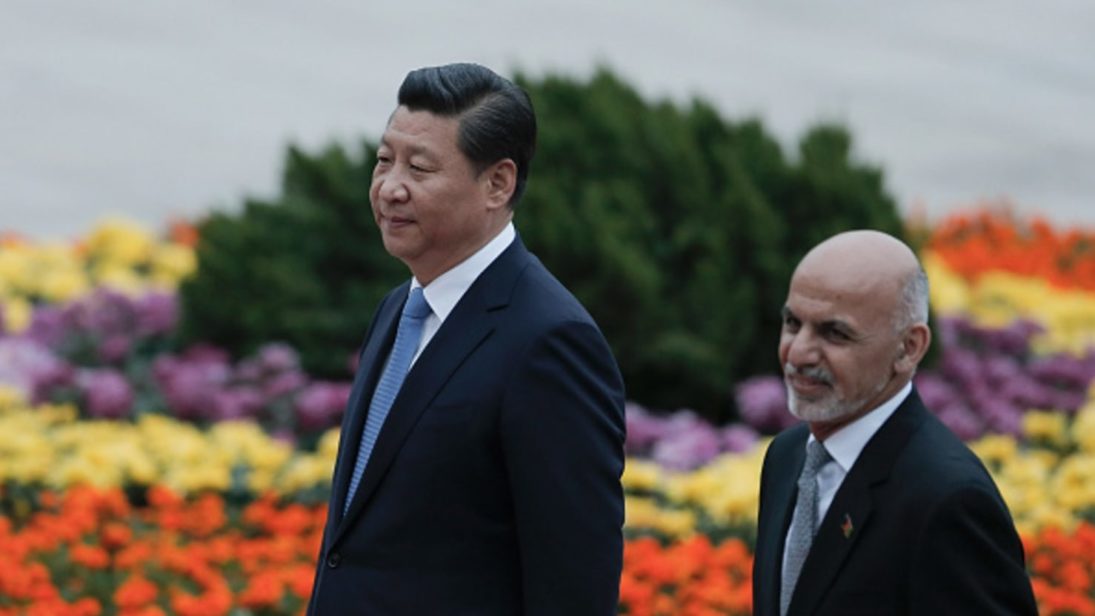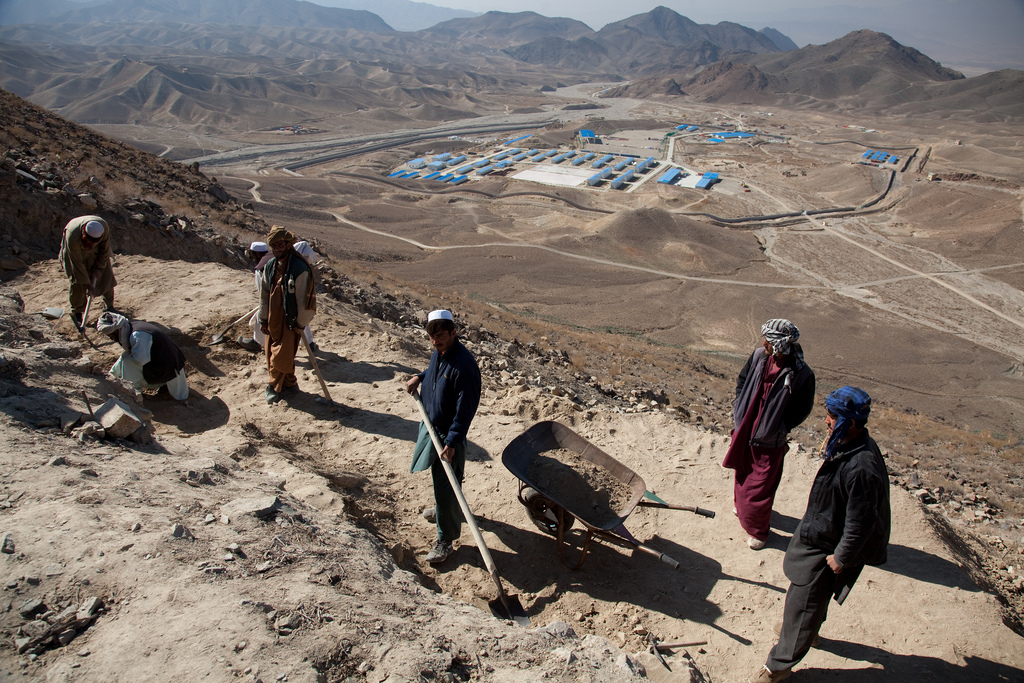
Security concerns have often placed Afghanistan on the periphery of Chinese diplomacy. After a long period of Soviet influence in Afghanistan from 1950 to 1980, China supported the Afghan Mujahideen’s fight against the Soviets. However, when Afghanistan fell under Taliban rule following the withdrawal of Soviet troops, China could not closely work with the government given the purported link between the Taliban leadership and the East Turkestan Independence Movement, a Uighur separatist movement in China’s Xinjian province that borders Afghanistan. This connection has remained a constant point of concern for Beijing since the group’s emergence in 2000. The narcotics trade has also emerged as a key security concern between Afghanistan and China. While these concerns persist, China has pursued greater economic engagement with Afghanistan, particularly due to its considerable supply of rare earth minerals and its potential as a pathway for Chinese trade into Central Asia.
Chinese Interests in Afghanistan
As mentioned earlier, Beijing’s primary interest with respect to Afghanistan is security since it borders China’s unstable Xinjiang province and worries about a spillover of extremism. Thus, China has a stake in Afghan stability. Economic interests also figure prominently since China is a nation with increasing energy needs and Afghanistan has almost unexploited oil and gas reserves.
However, Afghanistan is also important to China geopolitically. From a Chinese perspective, U.S. military involvement in Afghanistan is not based on a desire to improve the security of Afghanistan, but to contain China and access the hydrocarbon resources of the Central Asian countries of the Shanghai Cooperation Organization (SCO). Though China was initially supportive of U.S. involvement in Afghanistan, Beijing began to view that presence with skepticism after the invasion of Iraq. The prominent American scholar John Mearsheimer has argued that China cannot rise to power peacefully, as its ambitions of becoming a regional hegemon will compel China to push America out of Eurasia. This will force the United States to adopt a policy of containment towards China, much like the U.S. approach to the Soviet Union during the Cold War. This seems to be playing out in Central Asia as China—realizing that it cannot depend on the Middle East as its sole source of oil—is seeking to cooperate with Central Asian countries to locate and extract alternative energy resources from the region.
Another related Chinese interest in Afghanistan seems to be supporting its ally Pakistan. For instance, in President Trump’s recent speech on the new U.S. strategy in the region, he condemned Pakistan’s support of terror groups that destabilize Afghanistan. Yet Beijing supported Islamabad, as it has often done in the past, with the Chinese foreign minister releasing a statement that Pakistan has “done its best with a clear conscience” to combat terrorism. Though Chinese support to a BRICS statement calling out Pakistan-based terror groups led to speculation of China exerting pressure on Pakistan, it was laid to rest when Pakistani Foreign Minister Khawaja Asif was warmly welcomed in China recently and Beijing reiterated its support to Islamabad.
In view of Beijing’s skepticism regarding the United States’ presence in Afghanistan, where political concerns regarding relative gains cast suspicion on Washington’s motives, Afghanistan is seen as yet another space on the regional checkerboard. And by supporting Pakistan’s position in Afghanistan, China seems eager to equal or replace the United States’ role as a key political stakeholder in Afghanistan.

Beijing’s Economic Push in Afghanistan
As U.S. presence in Afghanistan slowly diminishes, Beijing has taken several steps to signal its interest to Kabul as an economic partner. In 2014, for example, China committed 2 billion yuan ($327 million) in aid to Afghanistan through 2017, larger than a total of 1.5 billion yuan ($240 million) it had provided in over a decade between 2001 and 2013.
While Beijing has implemented some aid-oriented infrastructure projects in Afghanistan in the past, such as the Parwan irrigation project in the 1970s or a hospital and educational institution more recently, the focus is now on commercial infrastructure. China was one of the first countries to invest in mineral extraction in Afghanistan, obtaining a contract to work on the Mes Aynak copper mine in 2008 at a cost of about $3 billion, which is expected to generate $1 billion in revenue annually and create 8,500 direct jobs for Afghans. China has also invested in oil and natural gas resources in Amu Darya in the northern provinces of Suri Pul and Faryab, promising to return 50-70 percent of the profit back to Afghanistan. However, these projects have either failed to get off the ground due to security issues and environmental concerns, such as in the case of Mes Aynak, or suffered delays.
Thus, hopes of Afghanistan benefitting economically from its association with China now largely rest on the One Belt, One Road (OBOR) project or the Belt and Road Initiative(BRI), as the Chinese now call it. The two countries signed a Memorandum of Understanding in May last year to promote cooperation on OBOR and Afghanistan sent a delegation to attend the BRI conference in China earlier this year. As part of this vision, China and Afghanistan have already improved their transportation links, with the first freight train carrying cargo between Hairatan in Afghanistan and Nantong in China started in August 2016. A note from Afghanistan’s Ministry of Foreign Affairs describes Afghanistan’s role in OBOR and its benefits as such: Given its location at the crossroads of Central, South, and Southwest Asia, Afghanistan is poised to benefit from and partner with China through the OBOR Initiative. […] With considerable human talent and financial resources attached to it, the OBOR Initiative has the potential to serve as an integral part of the Afghan Government’s Infrastructure and Connectivity Development and Private Sector Development National Priority Programs.”
Playing a Political Role
As its economic influence in the country has grown, China has become more involved in political questions over Afghanistan’s stability and potential reconciliation with the Taliban. Upon becoming Afghanistan’s president in 2014, Ashraf Ghani “courted” China’s involvement in the peace process. Though China’s foreign policy principle is non-interference in the domestic affairs of a country, it has recently shown initiative to engage on an Afghan peace and reconciliation process – it was a part of the Quadrilateral Coordination Group and is alleged to have hosted a Taliban delegation for talks. and participated in a trilateral discussion with Pakistan and Russia. However, some of its actions have been seen with skepticism in Afghanistan, such as its trilateral discussion with Pakistan and Russia in December 2016 on the security situation in Afghanistan, without inviting representation from Afghan officials. In any case, the recent change of U.S. strategy in Afghanistan makes the future of this investment uncertain since Trump hardly mentioned reconciliation as part of the new strategy and omitted any reference to a Chinese role. Washington’s reinvestment in Afghanistan may indicate a difference of opinion with Beijing, which is eager to place less emphasis on military means and more on capacity-building as well as economic development efforts.
How Afghanistan Views China’s Future Role
Afghanistan is hopeful of a fruitful economic partnership with China, especially by joining the BRI, and welcomes China’s constructive role in maintaining peace and stability in the country, including through its involvement in the Afghan peace process. However, there is some concern that due to China’s close ties with Pakistan and its battle with the United States for geopolitical influence, Beijing may heed Islamabad’s advice on what’s best for Afghanistan. And that will be a mistake. The success of Afghanistan-China relations depends on mutual trust and pursuing opportunities that are beneficial to both.
Editor’s note: This is the fifth installment of South Asian Voices’ new six-part series, China in South Asia. In this series, our contributors Fatima Raza from Pakistan, Saimum Parvez from Bangladesh, Avasna Pandey from Nepal, Kithmina Hewage from Sri Lanka, Ahmad Shah Angar from Afghanistan, and Pushan Das from India explore China’s strategic and economic goals in their respective countries, the challenges China may face in implementing those goals, and how China’s engagement will affect the regional balance of power in South Asia. Read the entire series here.
***
Editor’s Note: Click here to read this article in Urdu
Image 1: Lintao Zhang via Getty Images
Image 2: Jerome Starkey via Flickr


